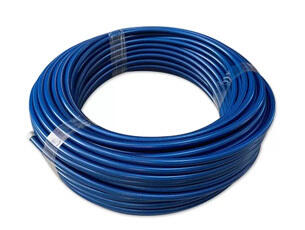
Designed for lightweight performance and flexibility, the company's nylon brake lines for motorcycles offer a cost-effective alternative to stainless steel lines. These lines feature a reinforced nylon outer sheath over a high-strength inner tube, providing abrasion resistance and flexibility for complex motorcycle brake line routing. The nylon material is lightweight, corrosion-resistant, and resistant to UV degradation, making it suitable for various riding conditions. Nylon brake lines for motorcycles are available in multiple colors to match bike aesthetics, with compatible fittings for easy installation. They undergo pressure testing (up to 2000 PSI) and temperature testing (-40°F to 250°F) to ensure reliability. While offering slightly more expansion than stainless steel lines, these nylon lines provide a budget-friendly option for motorcycle owners seeking improved durability over standard rubber hoses.

Copyright © 2025 by HENGSHUI BRAKE HOSE MACHINERY CO.,LTD — Privacy Policy